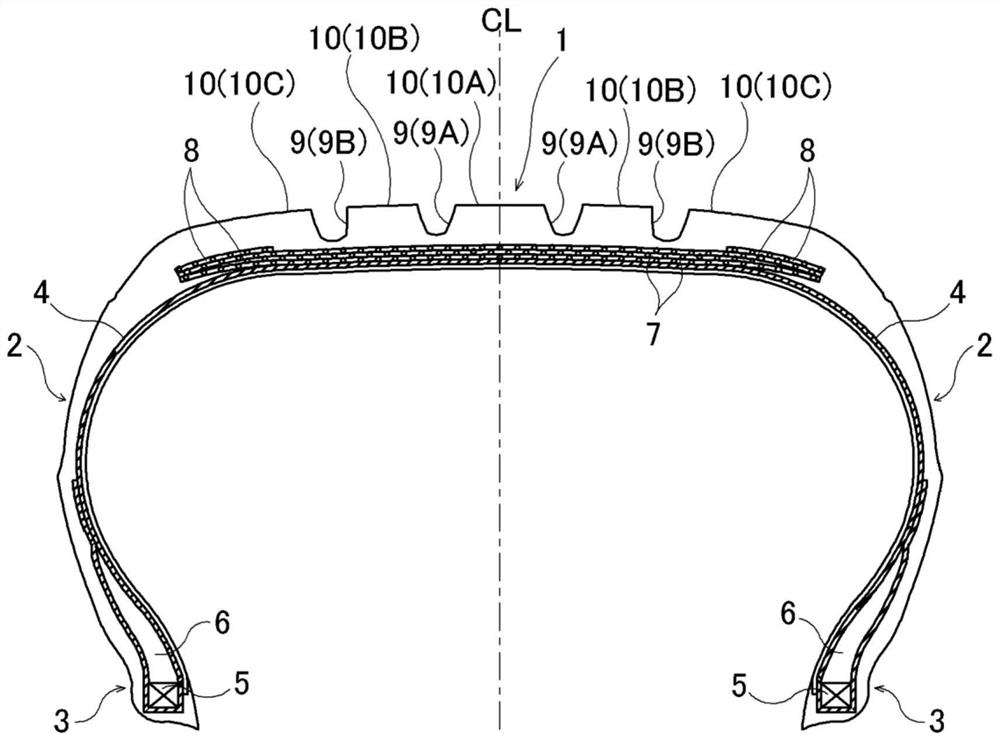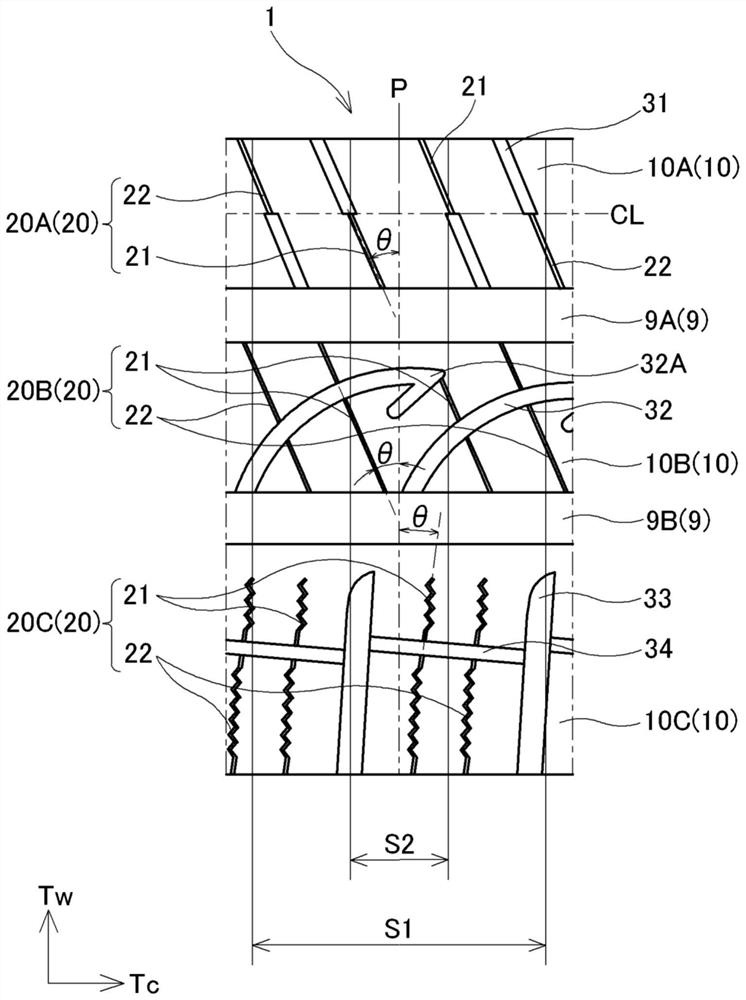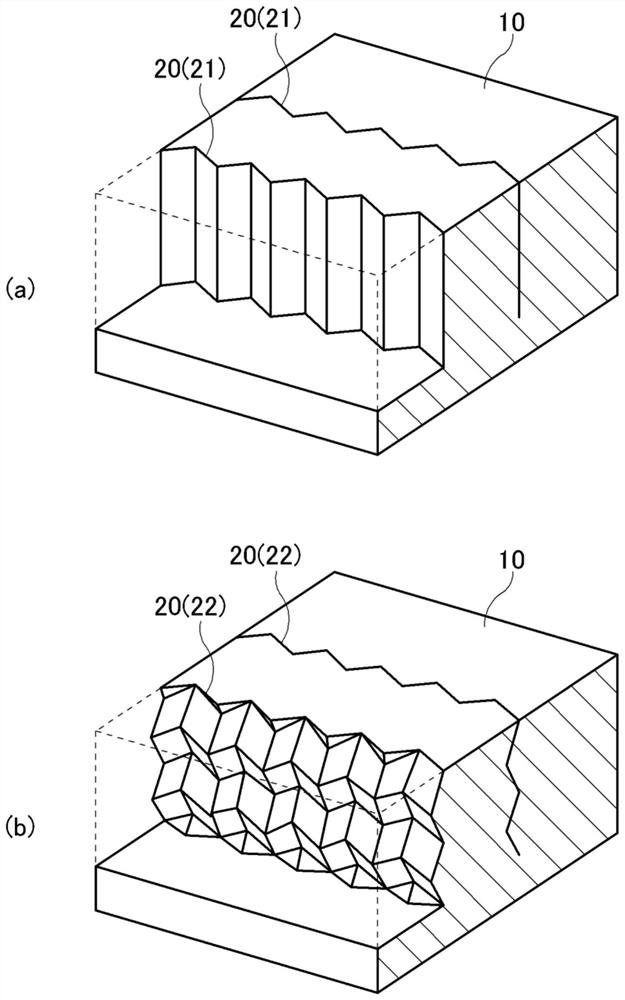Pneumatic tire
A pneumatic tire, tire circumferential technology, applied to tire parts, tire tread/tread pattern, vehicle parts, etc. Fitting, simple structure, and the effect of suppressing appearance defects
- Summary
- Abstract
- Description
- Claims
- Application Information
AI Technical Summary
Problems solved by technology
Method used
Image
Examples
Embodiment
[0044] The tire size is 205 / 55R16 with figure 1 The basic structure exemplified by figure 2 Based on the tread pattern of the sipes, the presence or absence of sipes in the boundary area, the size relationship between the ratio R1 and Rt, the land portion where the ratio R1 / Rt, and the ratio R1' / Rt' are the smallest, and the inclination angle θ is the smallest. The size relationship of the land portion, the ratios R1 and R2, and the size relationship of the depth D1 and Dt are set as in Table 1 for the tires of Conventional Example 1, Comparative Examples 1-2, and Examples 1-13, respectively.
[0045] The tire of Conventional Example 1 has a structure in which the number of sipes is reduced in the first boundary region (second boundary region) and no sipe is arranged in the first boundary region (second boundary region).
[0046] In Tables 1 and 2, the columns "land portion with minimum ratio R1' / Rt'" and "land portion with minimum inclination angle θ" show the types of land...
PUM
 Login to View More
Login to View More Abstract
Description
Claims
Application Information
 Login to View More
Login to View More - R&D
- Intellectual Property
- Life Sciences
- Materials
- Tech Scout
- Unparalleled Data Quality
- Higher Quality Content
- 60% Fewer Hallucinations
Browse by: Latest US Patents, China's latest patents, Technical Efficacy Thesaurus, Application Domain, Technology Topic, Popular Technical Reports.
© 2025 PatSnap. All rights reserved.Legal|Privacy policy|Modern Slavery Act Transparency Statement|Sitemap|About US| Contact US: help@patsnap.com



